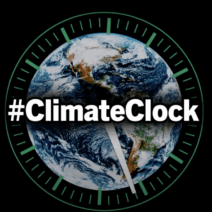In contemporary discourse, the terms “climate change” and “global warming” often emerge interchangeably, engendering considerable confusion. However, a nuanced understanding of both phenomena is crucial for comprehending the pressing environmental issues currently facing our planet. While they are intrinsically interconnected, they do denote distinct processes with unique implications.
Global warming specifically refers to the phenomenon of an increase in Earth’s average surface temperature due to the rising concentration of greenhouse gases (GHGs) in the atmosphere. This increase is primarily attributed to human activities such as burning fossil fuels, deforestation, and industrial processes. Carbon dioxide, methane, and nitrous oxide are prominent GHGs, each contributing to the greenhouse effect by trapping heat in the atmosphere. The ramifications of global warming are far-reaching, influencing weather patterns, sea levels, and biological diversity.
Conversely, climate change encompasses a broader range of changes in climate that extends beyond mere temperature fluctuations. This term includes alterations in precipitation patterns, shifts in wind patterns, and variations in storm intensity and frequency. Climate change can result from various factors, including natural phenomena, such as volcanic eruptions and solar radiation variations, as well as anthropogenic influences like land-use changes and greenhouse gas emissions. While global warming is a significant aspect of climate change, the latter captures the multifaceted nature of our planet’s climatic transformations.
Understanding the distinction between these two concepts is pivotal for effective policy formulation and implementation. Policymakers must recognize that addressing global warming through the reduction of GHG emissions will play a critical role in mitigating the broader impacts of climate change. It is imperative to cultivate an informed citizenry capable of discerning the intricacies of these terms. Awareness and education regarding climate dynamics are essential for fostering a society poised to tackle environmental challenges.
Further complicating the discourse, environmentalists and media often emphasize global warming over climate change due to its dramatic immediacy. The image of melting glaciers and rising sea levels evokes strong emotional responses, encapsulating the urgency of the issue. However, it is fundamental to appreciate that climate change encompasses long-term alterations that may manifest less visibly but are equally significant. An informed perspective involves recognizing both the immediate and gradual challenges posed by climate dynamics.
Additionally, the interactions between global warming and other ecological processes must be considered. For instance, as global temperatures rise, ecosystems face stress, affecting biodiversity and habitat viability. Species adaptation may falter as habitat ranges shift or decline. Biodiversity loss not only incurs ethical and aesthetic costs but also undermines ecosystem resilience, which is essential for sustaining human life.
The socio-economic ramifications of climate change further complicate the discourse. Vulnerable populations often bear the brunt of climatic shifts, as inequitable socio-economic conditions exacerbate their exposure and sensitivity. For example, coastal communities are increasingly threatened by sea-level rise, while agricultural regions face altered growing conditions due to shifting rainfall patterns. Policymakers must adopt an integrative approach that acknowledges the socio-economic dimensions of both climate change and global warming, ensuring that mitigation strategies are equitable and just.
International treaties, such as the Paris Agreement, have made strides in addressing the urgent need to combat these phenomena collaboratively. The commitment to limiting global temperature rise to well below 2 degrees Celsius compared to pre-industrial levels seeks to stabilize climate systems and mitigate the worst impacts of global warming. Furthermore, adaptation strategies must be implemented to manage existing climate change impacts effectively. This dichotomy between mitigation and adaptation encapsulates the multi-pronged approach needed to navigate the challenges posed by climate change and global warming.
Local and global initiatives can also bridge the gap between scientific research and public understanding. The translation of complex scientific data into relatable narratives fosters community engagement. Citizen-led projects, such as reforestation efforts and renewable energy initiatives, exemplify proactive measures that can counteract both climate change and global warming. The fostering of a community-oriented approach cultivates resilience and enhances public accountability in environmental stewardship.
As industries evolve, the impact of technological advancements on climate dynamics must be critically evaluated. Innovations such as carbon capture and storage (CCS) present promising opportunities to mitigate GHG emissions. However, reliance on unproven technologies without stringent regulatory frameworks may engender unforeseen environmental consequences. Ensuring that technological advancements align with ecological imperatives necessitates a robust ethical framework guiding research and application.
Ultimately, the resolution of the climate crisis requires comprehensive engagement encompassing individual actions, corporate responsibilities, and governmental policies. From the grassroots level to international agreements, collaborative efforts play a vital role in reshaping our environmental trajectory. Climate change and global warming are inextricably linked; addressing one inevitably impacts the other. An enlightened populace and committed leadership can catalyze transformative change, ensuring a sustainable and resilient future for our planet.


